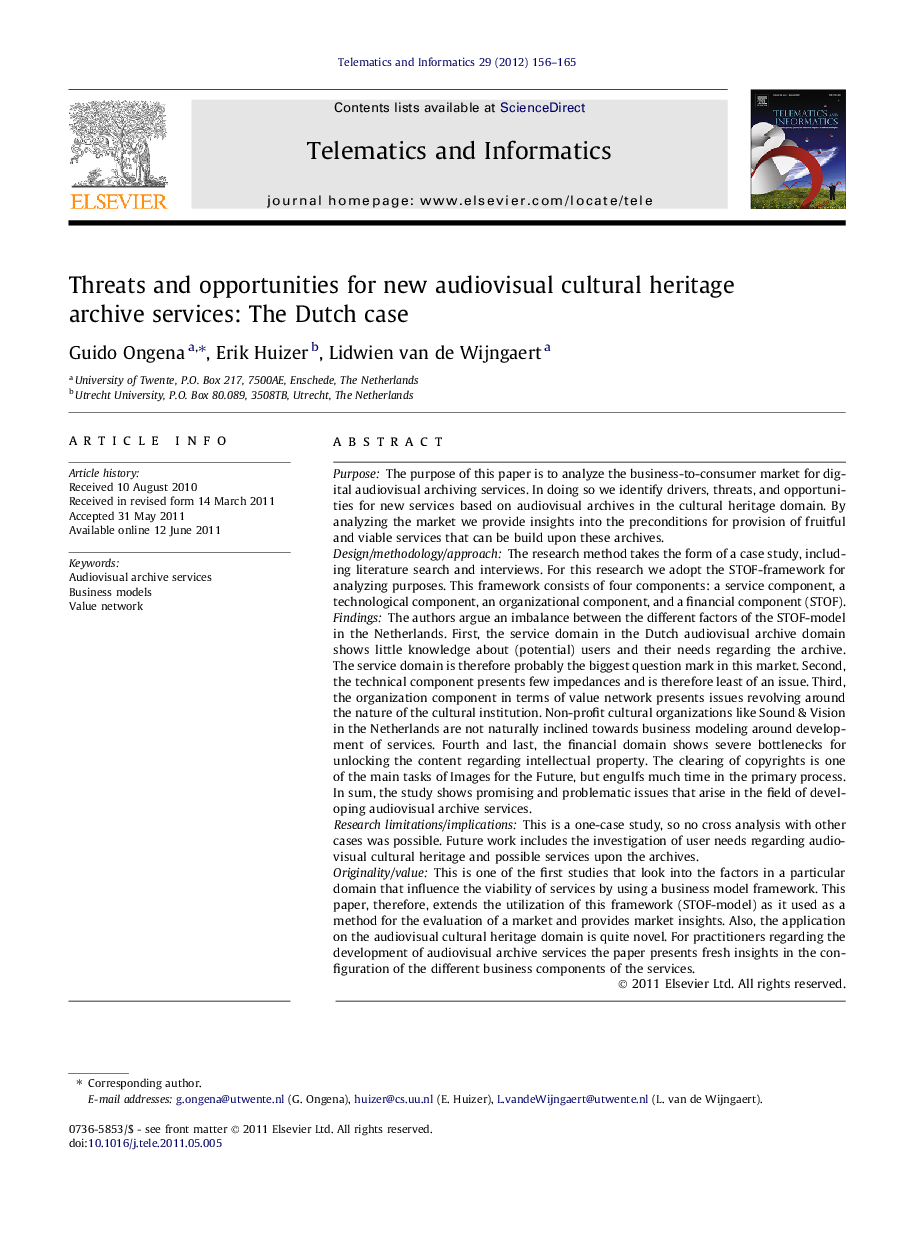| کد مقاله | کد نشریه | سال انتشار | مقاله انگلیسی | نسخه تمام متن |
|---|---|---|---|---|
| 466083 | 697765 | 2012 | 10 صفحه PDF | دانلود رایگان |

PurposeThe purpose of this paper is to analyze the business-to-consumer market for digital audiovisual archiving services. In doing so we identify drivers, threats, and opportunities for new services based on audiovisual archives in the cultural heritage domain. By analyzing the market we provide insights into the preconditions for provision of fruitful and viable services that can be build upon these archives.Design/methodology/approachThe research method takes the form of a case study, including literature search and interviews. For this research we adopt the STOF-framework for analyzing purposes. This framework consists of four components: a service component, a technological component, an organizational component, and a financial component (STOF).FindingsThe authors argue an imbalance between the different factors of the STOF-model in the Netherlands. First, the service domain in the Dutch audiovisual archive domain shows little knowledge about (potential) users and their needs regarding the archive. The service domain is therefore probably the biggest question mark in this market. Second, the technical component presents few impedances and is therefore least of an issue. Third, the organization component in terms of value network presents issues revolving around the nature of the cultural institution. Non-profit cultural organizations like Sound & Vision in the Netherlands are not naturally inclined towards business modeling around development of services. Fourth and last, the financial domain shows severe bottlenecks for unlocking the content regarding intellectual property. The clearing of copyrights is one of the main tasks of Images for the Future, but engulfs much time in the primary process. In sum, the study shows promising and problematic issues that arise in the field of developing audiovisual archive services.Research limitations/implicationsThis is a one-case study, so no cross analysis with other cases was possible. Future work includes the investigation of user needs regarding audiovisual cultural heritage and possible services upon the archives.Originality/valueThis is one of the first studies that look into the factors in a particular domain that influence the viability of services by using a business model framework. This paper, therefore, extends the utilization of this framework (STOF-model) as it used as a method for the evaluation of a market and provides market insights. Also, the application on the audiovisual cultural heritage domain is quite novel. For practitioners regarding the development of audiovisual archive services the paper presents fresh insights in the configuration of the different business components of the services.
► We mapped external drivers shaping the audiovisual cultural heritage archive domain.
► We investigated the business model components for the current audiovisual cultural heritage archive services.
► The different business model components show an imbalance regarding current audiovisual cultural heritage archive services.
► We extended the utilization of the STOF-model framework as it used as a method to provide market insight.
Journal: Telematics and Informatics - Volume 29, Issue 2, May 2012, Pages 156–165